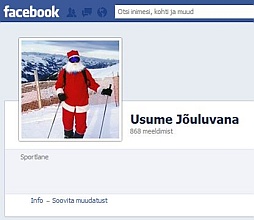Mäetagused vol. 58
Summary
-
Tracing Back the Word jumal (‘God’)

Ene Vainik
Keywords: Estonian, etymology, folk belief, loans, semantics, theonyms
The paper discusses the origins of the Estonian word jumal (‘God’). First, it summarises the versions proposed by previous treatises, and thereafter the linguistic material of Estonian runo songs is analysed in order to detect variations in its usage, pointing to the possible pre-Christian meaning of the word. The body of the paper consists of presenting and discussing the alternative stems that the word jumal could be derived from. Among them are some appellatives (jumm/juma ‘log’; jumi/jume ‘colour of the face’) as well as proper names of the mythological creatures of the neighbouring countries (Finnish Jumi and Latvian Jumis) and the name of the Indo-European divine twin (Yemo).The linguistic and geographical distribution of the term as well as the background information obtained from archaeology suggest that the latter version fits the best. In the following a somewhat more extended summary of the abovementioned sections of the paper is presented.
The previous treatises agree that the term jumal is of genuine origin. It is considered to be a derivative term consisting of the stem jumV (the last vocal varying between (a/e/i) and of a suffix (-l-). They disagree on its proposed original meaning (‘cover’, ‘face’, ‘sound of thunder’, ‘good’, ‘essence’, ‘shivering’, ‘dead body’) and on what the function of the suffix has been. There are also different opinions on whether the supposed supreme being has been of “heavenly” kind or it could have been located elsewhere.
The analysis of the context in which the term jumal was used in the runo songs revealed that besides the usages in the Christianity-related contexts (co-located with Jeesuke (‘Jesus’) and Mari (‘Mary’)) there were other uses where it omitted such a company. Among them were the stereotypical phrases and addresses for help and the pantheistic nature-related usages (in connection with wind, trees and light). There were also some references to the genuine Baltic-Finnic mythological heritage (the God-Smith, the ‘golden trace of god’, etc.) and some usages that could be cultural influences from the neighbours.
Tracing back the dialectal stem jumm/juma (‘log’) reveals its cognate in ancient Russian ‘connected rafts; catamaran’. The wood-related origin of the word jumal is considered semantically motivated (the wooden statues of gods being the link between the ideological content and the material), but the stem as the actual origin of jumal is questionable because of its presence not only in the Baltic-Finnic languages but also in Mordvinic and Mari. The stem jumi/jume (‘colour of the face’) appeared to be used in different meanings mainly in the archaic runo songs, indicating ‘vital force’ and ‘mental force’. These meanings fit perfectly with the Estonians’ animistic worldview in general and their obsession with the vital force noticed by the earlier authors. Also, the usage of the term reveals that metonymy (paleness stands for physical/mental weakness) and metaphors (e.g. vital/mental force is liquid, vital/mental force is a person) have been at work. Derivation of the notion of jumal from such a concept seems highly probable. However, the abstract meanings are only locally distributed in a part of southern Estonia while the word jumal(a) is known in the Baltic-Finnic languages and its cognates also in Mari and Mordvinic.
In the Finnish heritage there was a mythological creature called Jumi. He appeared as double-faceted: causing of sudden diseases was attributed to him, and at the same time he was the fertility deity, worshipped in a special type of play-weddings. Jumi has been referred to as the Finno-Ugric pantheistic “spirit of the world” having a cognate at least in Mari (Jumo). Derivation of the appellative jumal from such a proper name seems highly probable.
In Latvian there is a word jumi-s (f. juma-, n jume-) (‘double fruit’), and its supposed derivative jumala (‘fat female’). Historically, there has been a fertility deity called Jumis in the Baltic pantheon. Derivation of the appellative jumal (‘god’) from the borrowed proper name of the fertility deity also seems probable. In addition, there is a possibility that the whole word jumala has been borrowed. Again, the linguistic and geographic distribution of the term makes this particular version of borrowing somewhat questionable.
The Latvian Jumis is etymologically connected to the Indo-European divine twin Yemo, which has cognates in the creation myths of several Indo-European cultures and his role has been to symbolise the connection of living people to the dead ancestors. The original meaning of the stem is believed to be ‘to bind together’. Purely linguistic evidence leaves it uncertain whether this could be the actual origin of the term jumal, but the word has been borrowed to the Finno-Ugric languages at least once (the Sami juomek ‘twin’).
The linguistic distribution (cognates in Mari and Mordvinic) suggests that the stem Jum must have been coined or borrowed during the prehistoric period 1900–900 BC. At that time bronze spread from the East to the West, and together with it the fortified settlements similar to the Indo-Iranian ones. The herding and cultivating economy produced more food than hunting and gathering, thus giving an advantage to the tribes who had changed their economy. The archaeological evidence (types of graves) in Estonia reveals a collectivist mentality and a cult of ancestors. Therefore, within the whole economic, cultural and ideological package, borrowing of the name of the deity of dead ancestors Yemo->Jum seems highly probable. There are several other religion-related Indo-Iranian loanwords in Estonian (taevas ‘heaven’ <*‘god’, peied ‘wake’, mana- ‘spell; underworld’, marrask (of skin) ‘dead’). The original ancestor-related meaning of the name/stem jum, however, has been reinterpreted according to the evolving needs of the Finno-Ugric speaking societies: it could refer to the pantheistic “spirit of the world”, the fertility deity, the life force, the ultimate helper, the creator, the heavenly supreme being, etc.
-
-
 Magic of the Little Chick Cheep: A Sudden Emergence of a Valuable Traditional Text
Magic of the Little Chick Cheep: A Sudden Emergence of a Valuable Traditional Text
Maria Zavjalova
Keywords: counting-out rhymes, folklore, hits, mass culture, The Little Chick Cheep
The article focuses on the song “Il Pulcino Pio” (in Eng. The Little Chick Cheep), which was released and became a real hit in Italy in 2012, analysing the reasons for its popularity. In a more detailed investigation of the ostensibly simplistic song with no special content, the author explains its deep semiotic meaning and derivation from the most ancient layers of consciousness. The analysis points to the main factors that helped the song get fixed in the minds of the general public: children’s song form reminding of cumulative fairytales, counting-out rhymes and primitive ditties; the chain structure of the alternating text and video; imitations of animal sounds and easily memorable rhythm, and an unexpected finale.
The analysis elucidates the mechanism and purpose of “The Little Chick Cheep”: to derive exalted pleasure, free the mind from anxiety, by delving into a childish, primitive, primal state, which is generated by simultaneous visual, audial and semantic techniques directed at activating the archetypes of collective subconsciousness.
-
-
Olympic Champion as a National Hero: Folkloristic View to One Doping Case
Piret Voolaid
Keywords: belief, conspiracy stories, fan culture, folklore about doping cases, national hero, national identity, sports folklore, stereotypes
The aim of the paper is to analyse the collective expression of attitudes elicited by the doping scandal that concerned the esteemed Estonian cross-country skier and Olympic gold medal winner, Andrus Veerpalu. The paper provides an insight into the evolution of an athlete into a national hero on the Internet.

The analysis is based on the material collected from Estonian online media during two years (from April 2011 to March 2013), when Andrus Veerpalu’s court case was actively followed by the Estonian sports circles and laymen alike. The data corpus includes the most relevant news texts published in the online news portal Delfi (www.delfi.ee), comments from the same online environment, posts from the Facebook fan sites, e.g., “We believe in Andrus Veerpalu”, etc.
The doping accusation called forth a quasi-religious movement, which was built around the belief that the athlete was sacred and it was not allowed to attack or accuse him in any way. The main threads in the comments analysed within this study could be divided into two opposing, although intertwining categories: the serious and the ironic. Both categories included people who believed in Veerpalu’s innocence, and those who did not; in addition, there were those who displayed their superiority towards the entire discussion. The analysis addresses the transformation of an Olympic hero into a national hero, and points out narratives that treat the scandal within the present-day genres of urban legends, conspiracy theories, and Internet humour.
The more or less genuine belief of people was reflected in sought-out explanations for the doping test result and counter-arguments (above all, via conspiracy stories, but also through social mobilisation in support of Veerpalu). In the post factum comments, the majority expressed the feeling that their trust had been justified; they renewed their unremitting belief in the acquitted hero. But the rather complicated end to the long case was also a confusing one, and this allowed the ironic discourse to produce parodies, jokes and other critical comments.
The questions central to the analysis are the following: (1) How does the audience interpret information provided by the media and which topics do the interpretations initiate in turn? (2) How does the notion of belief emerge in the discussion, which narratives and stereotypes are believed in, and how is the belief rationalised? (3) Which folkloric and other cultural (transmedial) texts have taken inspiration from this doping scandal?
-
-
 The Witch of Äksi – Clairvoyant of the Soviet Period
The Witch of Äksi – Clairvoyant of the Soviet Period
Mare Kõiva
Keywords: clairvoyant, Hermine Jürgens, modern witchcraft, patient narratives, divination narratives, witch of Äksi
This article is about the constellations in which communities accept extraordinary personalities and the traditional clairvoyant/witchcraft narratives. The person under discussion is the witch of Äksi, Hermine Elisabeth Jürgens (1892–1976), one of the best known Estonian 20th-century clairvoyants. In Estonian, the word nõid (‘witch’) is still used by the general public (a witch is a person with extraordinary powers, a healer, a wise(wo)man). During the Soviet period and also later, the term nõid was construed as an important keeper and interpreter of national knowledge. The article focuses on the life of the witch of Äksi and the corpus of narratives that talk about her, discussing the most common subtopics of narratives and motifs that have led to the folklorisation or narrativisation of her life. The narratives are divided into oral biographies, patient or client narratives (among which stories of divination stand out), and a smaller corpus, which contains the occurrences of the narrativisation of a person. The witch of Äksi was a city-born urbanite, who adapted to country life and unfamiliar socio-political circumstances. The narratives reflect the traditional duties of a witch/clairvoyant: looking for missing family members; searching for criminals or missing people in co-operation with the authorities; looking for stolen goods and animals; helping with matters of love and family relations; predicting one’s future and fate; healing, and single political prophesies.
-
-
Humour Polemics and Research Ethics
Liisi Laineste
Keywords: ethnic humour, folklore databases, humour, racism, research ethics
The link between jokes and social reality is visible in the way that jokes adapt to different socio-political contexts by dealing with the most salient issues of such contexts. This article casts light on another facet of the relationship of jokes and their social context. Ideas about jokes are influenced by their social context, being continuously reformulated by social change or political manipulation. The case study, brought to illustrate the point further, analyses media discourses that address the issues of and relationships between taste and sense of humour, mostly focusing on the reception of ethnic jokes. The different standpoints visible in the media, both in official and unofficial discourse, reflect ideas about the content and functions of jokelore, characterising jokes either as an essentially racist or as a funny (i.e., harmless) genre.
-
-
Pseudo-Linguistics as a Folklore Phenomenon
Maarja Villandi
Keywords: folklore, paralogical form, popular linguistics, pseudo-linguistics
The article discusses pseudo-linguistic theories about the kinship of the Estonian language published since the 1920s. The author describes these theories, pointing to their characteristic features and causes of origin, and then proceeds to give an overview of the non-scientific theories of the kinship of the Estonian language devised by Henrik Juhankatti, Arthur Gleye, Edgar Valter Saks, Jüri Härmatare and Oskar-Adolf Põldemaa. All the authors, none of whom are linguists, attach great importance to the Estonian language (resp. Baltic-Finnic languages) in the past, about which there are no corresponding data. They also connect the Estonian language (resp. Baltic-Finnic languages) to the old languages of culture (e.g. Etruscan). These theories have deserved much criticism and they have even been regarded as adverse. The author reaches the conclusion that pseudo-linguistic theories are not necessarily detrimental, but should rather be treated as folkloric manifestations deserving to be studied.
-
-
“Gulf Wars” in the 3rd millennium BCE. Military Campaigns of Sumerian and Akkadian Kings in the Area of the Persian Gulf in 2700–2150 BCE
Vladimir Sazonov
Keywords: Akkad, Dilmun, Elam, Magan, military campaign, military conflict, Persian Gulf, Sumer, treaty, war
War has always constituted an important part of politics in the Middle East. Evidences of wars in southern Mesopotamia (Sumer and Akkad) and in the region of the Persian Gulf can be found in written sources that date back to the Early Dynastic Period (in Sumer), approximately since 2700 or 2600 BCE. This region around the Persian Gulf (modern southern Iraq, south-western Iran, Oman, Bahrain, etc.) has always been a very important territory, both strategically and geopolitically, and a crossing point of different cultures, religions and ethnic groups since very early times.
This region of the Middle East (Persian Gulf) has always been rich in different resources. In ancient times it was an economically important region because of its frankincense, woods, stones (diorite), and metals (especially copper); today it is known for oil and gas. The Persian Gulf is the territory where the first wars for economic reasons took place already 5000–4500 years ago. Many Sumerian and Akkadian rulers tried to conquer this region, since Magan (modern Oman) and Dilmun (modern Bahrain) had deposits of copper, diorite, etc. Elam, which was located in south-western Iran, was a very important area quite rich in resources, and kings of Elam were often rivals of Sumerian and Akkadian kings in their ambitions to control the region of the Persian Gulf and the Zagros Mountains. This was the reason why in this region many military conflicts and wars between the Elamites, Sumerians and Akkadians took place.
-
News, overviews
-
In memoriam
Linda Dégh (March 18, 1920 – August 19, 2014).
-
-
Birthday Greetings!
Erna Tampere (95), Dan Ben-Amos (80), Arvo Krikmann (75), Wolfgang Mieder (70), Jaak Jaaniste (70), Mare Kõiva (60), Virve Raag (60), Irina Nurijeva (55), Mare Kalda (50), Kadri Viires (50), Reet Hiiemäe (40), Renata Sõukand (40), Tõnno Jonuks (40), Liisa Vesik (35).
-
-
Conferences on Religious Studies in Lithuania and Latvia
Mare Kõiva writes about the 11th conference of the International Study of Religion in Eastern and Central Europe Association (ISORECEA) at Vytautas Magnus University in Kaunas, Lithuania, on April 24–27, and the 2nd international conference of the Latvian Association for the Study of Religions (LRPB) at the University of Latvia in Riga, on October 16 and 17.
-
-
Symposium “Scala naturae” in Honour of Academician Arvo Krikmann’s Jubilee
An overview in English by Piret Voolaid is available in Folklore: Electronic Journal of Folklore, Vol. 59, at http://www.folklore.ee/folklore/vol59/news.pdf.
-
-
Europhras Conference in Paris
An overview in English by Anneli Baran is available in Folklore: Electronic Journal of Folklore, Vol. 59, at http://www.folklore.ee/folklore/vol59/news.pdf.
-
-
Conference Balkan and Baltic States in United Europe: History, Religion, Cultures II in Sofia
An overview of the conference that took place in Sofia, Bulgaria, on October 1–3, 2014, is given by Reet Hiiemäe, Mare Kõiva, Liisi Laineste and Piret Voolaid.
-
-
Fourth International Conference of Humour in Codogno
An overview about the 4th conference of humour by Liisi Laineste
-
-
Natalia Ermakov Defended a PhD Thesis on Erza Lamentations
On October 15, Natalia Ermakov defended her doctoral thesis titled, Ersa Laments: Traditions and Modernity, at Tallinn University. An overview is given by Ingrid Rüütel.
-
-
Calendar
A brief summary of the events of Estonian folklorists from July 2014 to December 2014.
-
-
Milestone in the Study of Mordvinian Mythology
Mordovskaja mifologia. Entsiklopedia I: A–K. [Mordvinian Mythology: Encyclopaedia I.] Saransk: Nautšno-issledovatelskii instituut gumanitarnyh nauk pri Pravitelstve Respubliki Mordovia. 2013. 484 pp. In Russian. An overview by Mare Kõiva in English is available in Folklore: Electronic Journal of Folklore, Vol. 59.
-
-
Udmurt Incantations
Tatiana Panina. Slovo i ritual v narodnoi meditsine udmurtov. [Word and Ritual in Udmurt Folk Medicine.] Izhevsk: UIIIaL UrO RAN. 2014. 238 pp. In Russian. An overview by Mare Kõiva.
-
-
The World, Folklore and Glowing Screens: Interpretation and Reinterpretation
Maailm ja multitasking. Tänapäeva folkloorist 10. [The World and Multitasking. Contemporary Folklore 10.] Compiled and edited by Mare Kõiva. Tartu: EKM Teaduskirjastus. 2014. 258 pp. In Estonian. An overview by Astrid Tuisk.
-
-
Publications on the Occasion of Arvo Krikmann’s 75th Jubilee
Scala naturae: Festschrift in Honour of Arvo Krikmann for his 75th birthday. Compiled and edited by Anneli Baran, Liisi Laineste, Piret Voolaid. Tartu: ELM Scholarly Press. 2014. 442 pp.
Antropologicheskii Forum [Anthropological Forum] No. 21 (2014), 392 pp.
Proverbium: Yearbook of International Proverb Scholarship, Vol. 31:2014. 532 pp.
An overview by Piret Voolaid in English is available in Folklore: Electronic Journal of Folklore, Vol. 59.